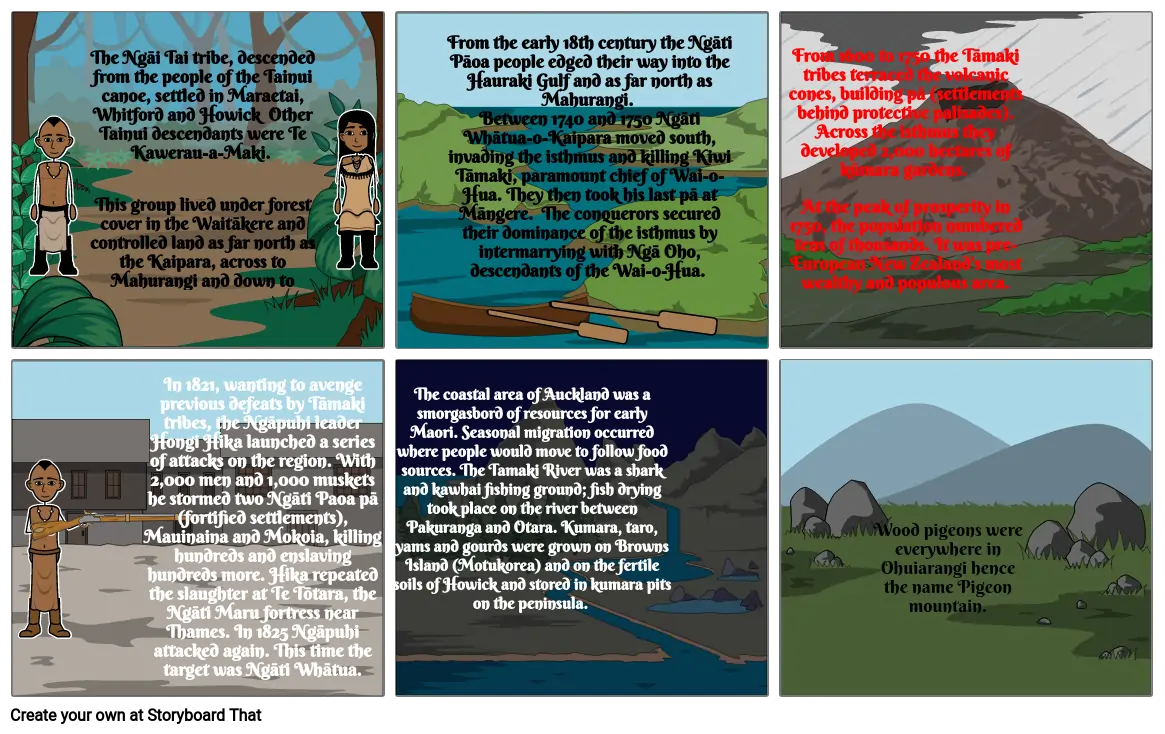Maori studies

स्टोरीबोर्ड पाठ
- The Ngāi Tai tribe, descended from the people of the Tainui canoe, settled in Maraetai, Whitford and Howick Other Tainui descendants were Te Kawerau-a-Maki. This group lived under forest cover in the Waitākere and controlled land as far north as the Kaipara, across to Mahurangi and down to Takapuna.
- From the early 18th century the Ngāti Pāoa people edged their way into the Hauraki Gulf and as far north as Mahurangi. Between 1740 and 1750 Ngāti Whātua-o-Kaipara moved south, invading the isthmus and killing Kiwi Tāmaki, paramount chief of Wai-o-Hua. They then took his last pā at Māngere. The conquerors secured their dominance of the isthmus by intermarrying with Ngā Oho, descendants of the Wai-o-Hua.
- From 1600 to 1750 the Tāmaki tribes terraced the volcanic cones, building pā (settlements behind protective palisades). Across the isthmus they developed 2,000 hectares of kūmara gardens. At the peak of prosperity in 1750, the population numbered tens of thousands. It was pre-European New Zealand’s most wealthy and populous area.
- In 1821, wanting to avenge previous defeats by Tāmaki tribes, the Ngāpuhi leader Hongi Hika launched a series of attacks on the region. With 2,000 men and 1,000 muskets he stormed two Ngāti Paoa pā (fortified settlements), Mauinaina and Mokoia, killing hundreds and enslaving hundreds more. Hika repeated the slaughter at Te Tōtara, the Ngāti Maru fortress near Thames. In 1825 Ngāpuhi attacked again. This time the target was Ngāti Whātua.
- The coastal area of Auckland was a smorgasbord of resources for early Maori. Seasonal migration occurred where people would move to follow food sources. The Tamaki River was a shark and kawhai fishing ground; fish drying took place on the river between Pakuranga and Otara. Kumara, taro, yams and gourds were grown on Browns Island (Motukorea) and on the fertile soils of Howick and stored in kumara pits on the peninsula.
- Wood pigeons were everywhere in Ohuiarangi hence the name Pigeon mountain.
30 मिलियन से अधिक स्टोरीबोर्ड बनाए गए

